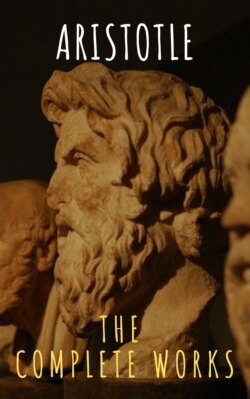Читать книгу Aristotle: The Complete Works - Aristotle - Страница 151
На сайте Литреса книга снята с продажи.
11
ОглавлениеWe think we have scientific knowledge when we know the cause, and there are four causes: (1) the definable form, (2) an antecedent which necessitates a consequent, (3) the efficient cause, (4) the final cause. Hence each of these can be the middle term of a proof, for (a) though the inference from antecedent to necessary consequent does not hold if only one premiss is assumed-two is the minimum-still when there are two it holds on condition that they have a single common middle term. So it is from the assumption of this single middle term that the conclusion follows necessarily. The following example will also show this. Why is the angle in a semicircle a right angle?-or from what assumption does it follow that it is a right angle? Thus, let A be right angle, B the half of two right angles, C the angle in a semicircle. Then B is the cause in virtue of which A, right angle, is attributable to C, the angle in a semicircle, since B=A and the other, viz. C,=B, for C is half of two right angles. Therefore it is the assumption of B, the half of two right angles, from which it follows that A is attributable to C, i.e. that the angle in a semicircle is a right angle. Moreover, B is identical with (b) the defining form of A, since it is what A’s definition signifies. Moreover, the formal cause has already been shown to be the middle. (c) ‘Why did the Athenians become involved in the Persian war?’ means ‘What cause originated the waging of war against the Athenians?’ and the answer is, ‘Because they raided Sardis with the Eretrians’, since this originated the war. Let A be war, B unprovoked raiding, C the Athenians. Then B, unprovoked raiding, is true of C, the Athenians, and A is true of B, since men make war on the unjust aggressor. So A, having war waged upon them, is true of B, the initial aggressors, and B is true of C, the Athenians, who were the aggressors. Hence here too the cause-in this case the efficient cause-is the middle term. (d) This is no less true where the cause is the final cause. E.g. why does one take a walk after supper? For the sake of one’s health. Why does a house exist? For the preservation of one’s goods. The end in view is in the one case health, in the other preservation. To ask the reason why one must walk after supper is precisely to ask to what end one must do it. Let C be walking after supper, B the non-regurgitation of food, A health. Then let walking after supper possess the property of preventing food from rising to the orifice of the stomach, and let this condition be healthy; since it seems that B, the non-regurgitation of food, is attributable to C, taking a walk, and that A, health, is attributable to B. What, then, is the cause through which A, the final cause, inheres in C? It is B, the non-regurgitation of food; but B is a kind of definition of A, for A will be explained by it. Why is B the cause of A’s belonging to C? Because to be in a condition such as B is to be in health. The definitions must be transposed, and then the detail will become clearer. Incidentally, here the order of coming to be is the reverse of what it is in proof through the efficient cause: in the efficient order the middle term must come to be first, whereas in the teleological order the minor, C, must first take place, and the end in view comes last in time.
The same thing may exist for an end and be necessitated as well. For example, light shines through a lantern (1) because that which consists of relatively small particles necessarily passes through pores larger than those particles-assuming that light does issue by penetrationand (2) for an end, namely to save us from stumbling. If then, a thing can exist through two causes, can it come to be through two causes-as for instance if thunder be a hiss and a roar necessarily produced by the quenching of fire, and also designed, as the Pythagoreans say, for a threat to terrify those that lie in Tartarus? Indeed, there are very many such cases, mostly among the processes and products of the natural world; for nature, in different senses of the term ‘nature’, produces now for an end, now by necessity.
Necessity too is of two kinds. It may work in accordance with a thing’s natural tendency, or by constraint and in opposition to it; as, for instance, by necessity a stone is borne both upwards and downwards, but not by the same necessity.
Of the products of man’s intelligence some are never due to chance or necessity but always to an end, as for example a house or a statue; others, such as health or safety, may result from chance as well.
It is mostly in cases where the issue is indeterminate (though only where the production does not originate in chance, and the end is consequently good), that a result is due to an end, and this is true alike in nature or in art. By chance, on the other hand, nothing comes to be for an end.
